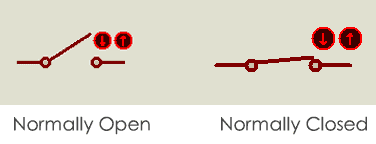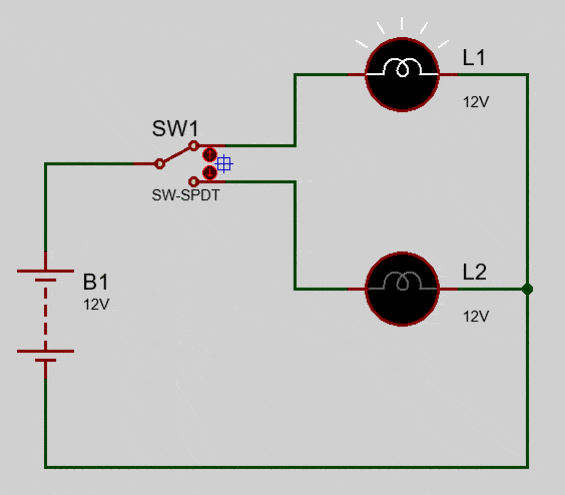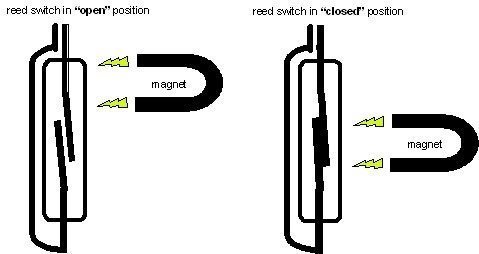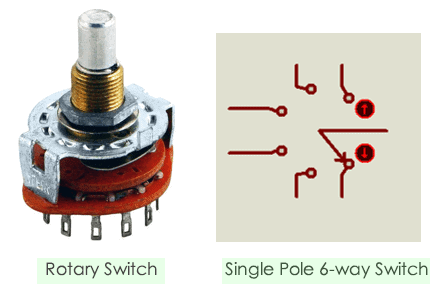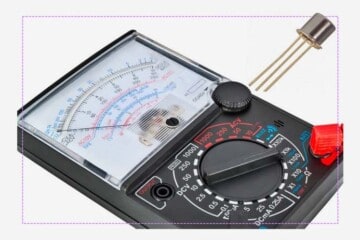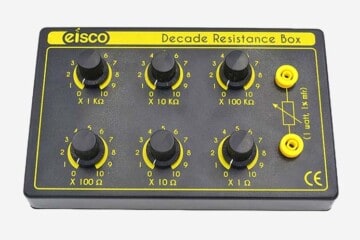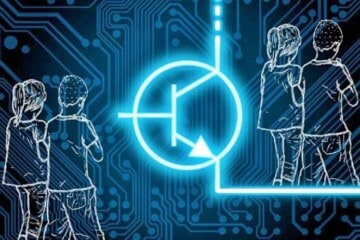What is a Switch?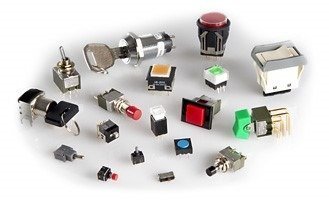
A switch is an electromechanical device used to control power in electrical and electronic circuits by turning it on and off or it is also termed as make and break an electrical circuit. A switch will have one or more contacts based on the type of switch. When current can flow from one contact to another, the switch is ON and is said to be closed. When there is a separation preventing the current flow between the contacts, the switch is OFF and is said to be open. If we see electrical equipment like light, fan, etc., it needs a closed path for the current to flow. To make it energize or de-energize, the circuit turn on and off function of a switch is important. Switches are actuated by any physical objects.
Types of switch
There are different types of switches based on their robustness, environmental resistance, and other characteristics. Switches come in a variety of shapes and sizes. Switches are normally classified into how the contacts are arranged. It can be a simple on-off type switch or it can have multiple positions that can control a different speed of a fan or like that. Basically, switches are of two types. One is a mechanical switch and the other is an electrical switch.
- The mechanical switch requires physical contact to turn on or off.
- An electrical switch doesn’t require physical contact to operate and it comes under semiconductors.
Normally a switch has two terminals – Poles and Throws.
Poles and Throws:

Pole refers to the total number of circuits that are controlled by the switch: Single Pole switches control only one electrical circuit. Double Pole switches control two or more independent circuits.
Throw refers to the number of output paths in which a current can flow. For example, a double-throw switch consists of contact capable of being connected to one of two other contacts.
Normally open and closed:
When a switch remains in the same state unless it is changed or actuated, the contacts are sometimes called as normally open and normally closed. In the normally open state, the contacts are open in default. In the normally closed state, the contacts are closed in default
A switch with both types of contact is called a changeover switch or double-throw switch. A changeover switch closes one circuit and opens a second circuit simultaneously
Based on the poles and throws switches can be classified into
- Single pole single throw (SPST)- The switch contains one circuit with NO or NC contacts.
- Single pole double throw (SPDT)- Only one of the loads can be energized at a time. The switch contains one circuit with changeover contacts.
- Double pole single throw (DPST)- Both load terminals can be energized at the same time. The switch contains two circuits with NO or NC contacts.
- Double pole double throw (DPDT)- Functions like two separate SPDT switches operated by the same actuator. only two loads can be ON at a time. The switch contains two circuits with changeover contacts.
- Based on the latch and Momentary control
- Push-button
- Reed switch
- Toggle switch
- Rocker switch
- DIP switch
- Slide switch
- Rotary switch
- Limit switch
-
Single Pole Single Throw (SPST)
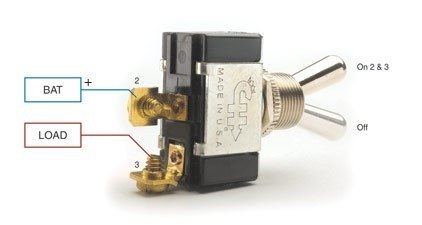
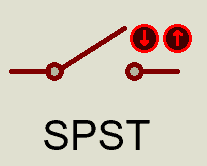
SPST switch is a basic on-off switch. It can control only one switch. This type of switch has two terminals; input terminal is pole and the output terminal is throw. The following is the symbol of the single pole single throw switch. When the contact of the switch is closed, the current will flow and makes the lamp bulb glow.
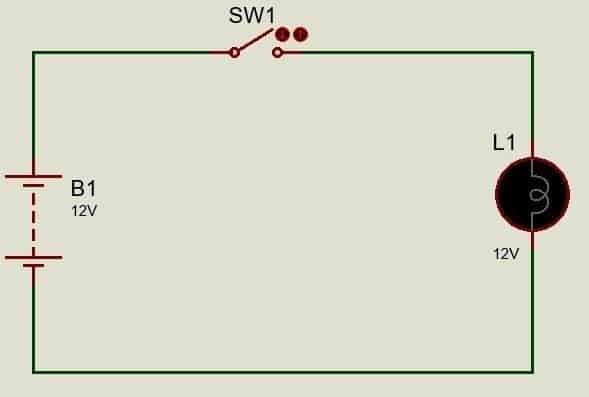
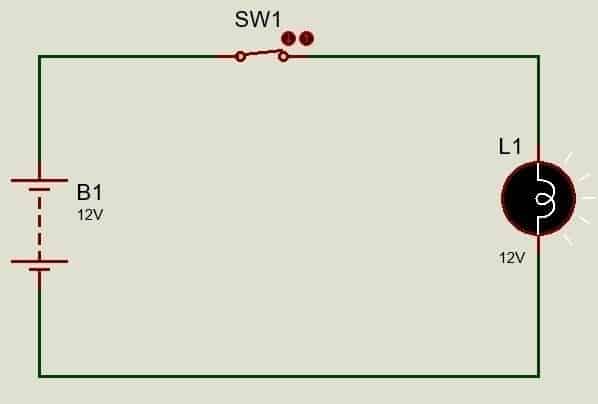
In the above circuit, when the switch is not pressed the contacts are separated. When the switch is pressed, the contacts will close. An example of an SPST switch is a light switch.
-
Single Pole Double Throw (SPDT):
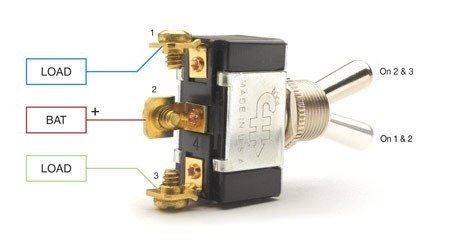
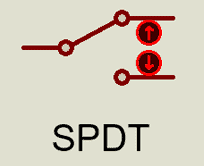
This type of switch has three terminals; one input terminal (pole) and two output terminal (throw). This is a three-way switch. Here we can connect two loads in the output terminal. But only one contact can be closed or energized at a time. This is also called as selector switch.
It can be used to turn on or off any of the two lamp loads. When a switch gets to connect with the top contact, it will close the circuit and the lamp will light and the circuit will be in the normally open position. The same will happen when the switch comes in contact with the bottom contact.so only one contact will be energized at a time. It is a great choice to select when there is two power source to connect.
-
Double Pole Single Throw (DPST):
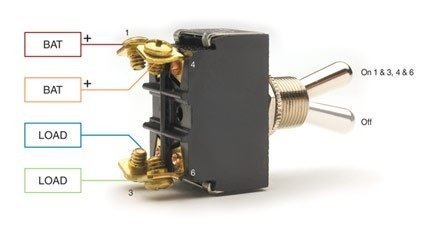
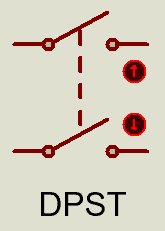
This switch has four terminals; two input terminals (pole) and two output terminals (throw). We can say this type of switches has two SPST switch in one package. Both switches can be actuated at the same time because they are connected side by side to a single liver. So when a contact is closed, current will flow makes it actuated.
-
Double Pole Double Throw (DPDT):
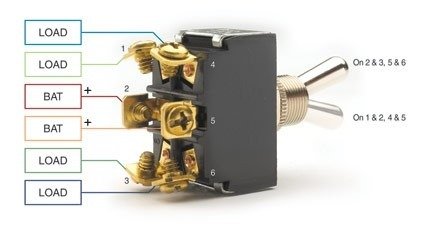
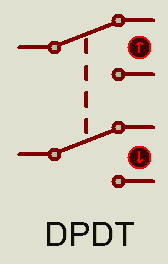
This type of switch has six terminals; two input terminals (pole) and four output terminals (throw) two for each pole. This is similar to two SPDT switches and works at the same time. It works like an SPDT switch.
It is easy to understand the working of DPDT switch if we see the circuit below. Here we used DPDT switch to reverse the polarity on a motor. The positive(+ve) side of the motor is connected to 1st switch throw-1 and to 2nd switch throw-4. The negative(-ve) side of the motor is connected to the throw-2 of the 1st switch and throw-3 of 2nd switch. In the 1st position, the motor will rotate in a clockwise direction. When we change the position of the switch, the power supply is reversed the motor will rotate in an anti-clockwise direction.
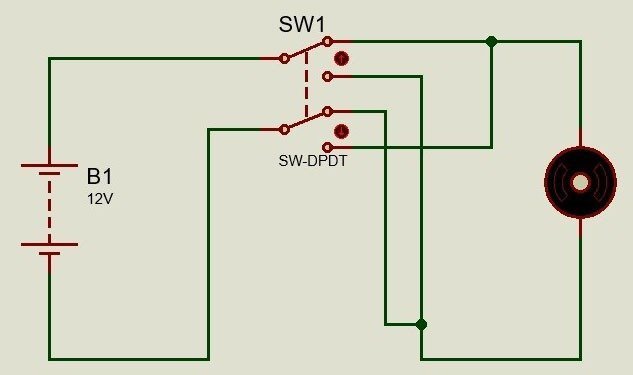
-
Based on Latch and Momentary control:
Momentary control switches are normally open or normally closed. The switch is ON only while it is being pressed. It turns OFF when it is released, for example, a push-button. A latch switch needs to be pressed once for ON and again for OFF, for example, a light switch.
- Push-Button
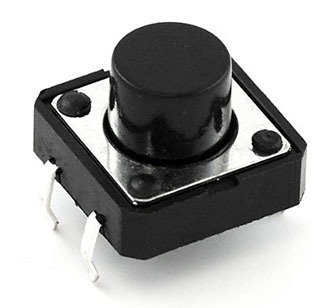
A push-button may be normally open or normally closed. When the button is pressed, the contact will be closed and the current will flow in the circuit. The circuit remains closed as long as the button is pressed. Whenever the pressure is released from the switch, it is now normally open.
We can say that the contacts will be opened or closed once the switch is pressed or released. This is a type of momentary switch.
- Reed Switch
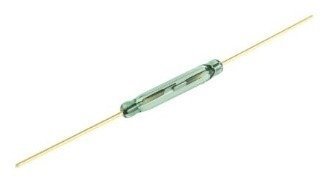
Reed switch has two metal contacts called reed which is made from a ferromagnetic material and is sealed inside a thin glass. In a reed switch, the contacts will close when a magnetic field is applied near them. When a magnetic field is removed, the contacts will be opened.
- Toggle Switch
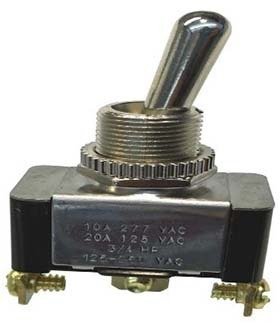
A toggle switch is a basic ON-OFF switch. It can be actuated by a mechanical lever placed at the top which controls the current flow in the circuit. The lever can be pushed up and down or left and right to open or close the contacts. They are available in SPST, SPDT, DPST, DPDT contacts terminology with two or more lever mechanism.
- Rocker switch
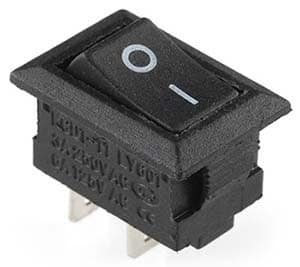
Rocker switch is also an ON-OFF switch which rocks when the switch is pressed. It has a seesaw connection to open or close the contacts. These switches can be widely seen in houses. It is also called a seesaw switch because when one end of the switch raised, the other end lowered. It is used for switching the circuit.
- DIP Switch
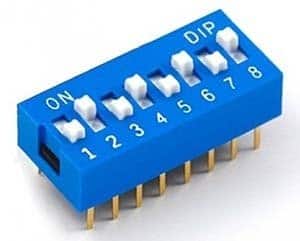
DIP is a dual inline package switch. It can be mounted onto the PCBs to make settings on electronic devices such as hard drives, modems, and motherboards. It has a sliding pin as switch contacts. these are arrays of SPST switch. These can be either set as ON or OFF. The DIP switch can create an electrical signal that provides a binary signal to computers that use the numbers 0 and 1 to perform complex calculations. The values of all switches in the DIP package can also be interpreted as one number. For example,7 switches of one DIP Switch offer 128 combinations, allowing them to select a standard ASCII character whereas 8 switches of one DIP Switch offers 256 combinations.
There are many types of DIP switches. They are slide DIP switch, rocker DIP switch, and rotary DIP switch.
- Slide Switch:
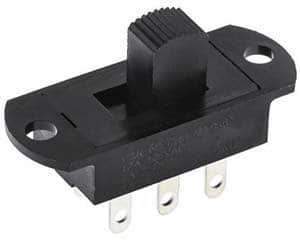
Slide switch has a slide like a knob called actuator that can be moved back and forth to open and close the contacts. The metal pins at the bottom are called terminals. The terminal in the middle of the switch makes a connection with one of the terminals at each end, depending on which way you move the actuator
- Rotary Switch
Rotary Switch is a switch in which the contacts are changed when the spindle is rotated in either a clockwise or an anticlockwise direction. It can stop in different positions. They are used for connecting one line to one of many lines. This switch is like a single pole and multi throw switch.
- Limit Switch
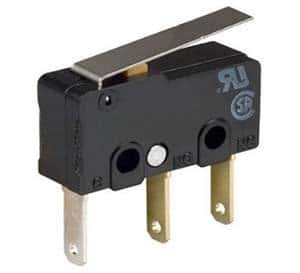
A limit switch can sense motion and detect the presence of objects when the object reaches a specific location. They activate when an object makes physical contact with the actuator. A variety of actuator types ensures that any manner of machine, component, or objects can be sensed by a limit switch. Limit switches have normally open and normally closed contacts. they are robust and can provide high precision.
Hall Effect Switch
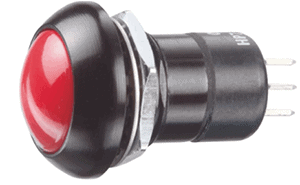
Other than the above, Hall-effect switches are momentary push-button switches that use hall effect sensor technology for contactless switching. These switches are designed to withstand harsh environment and are used in devices that carries high loads, heavy equipment and industrial machines.
Key Lock Switch
This switch is OFF-ON momentary switch that is used in cars or vehicles. The switch is in ON position until the vehicle is started. The momentary position will start the vehicle and return backs the switch to ON position. To turn off the vehicle, the switch is to be turned OFF.
Conclusion
Finally, there are two types of switches in electronics based on action. They are momentary and maintained switch function. The switch with maintained action will retain the position that is set until the position is changed manually, whereas momentary switches performs the required action but returns to the default state. The selection of switch depends on the style of application, environment and application requirement.

